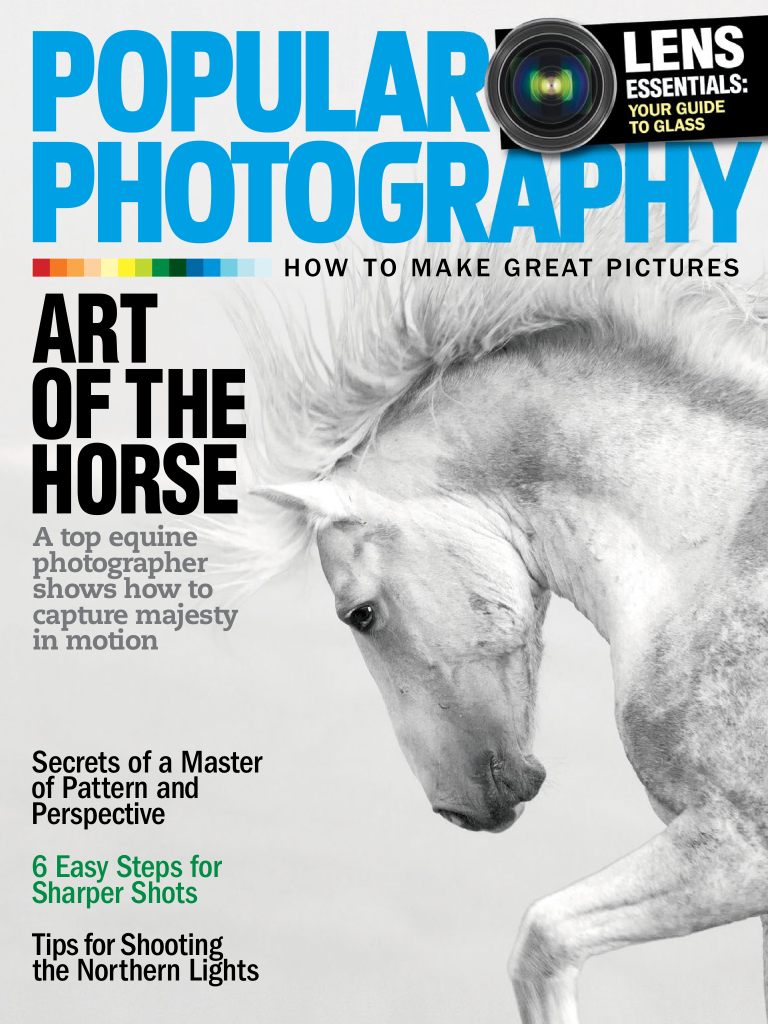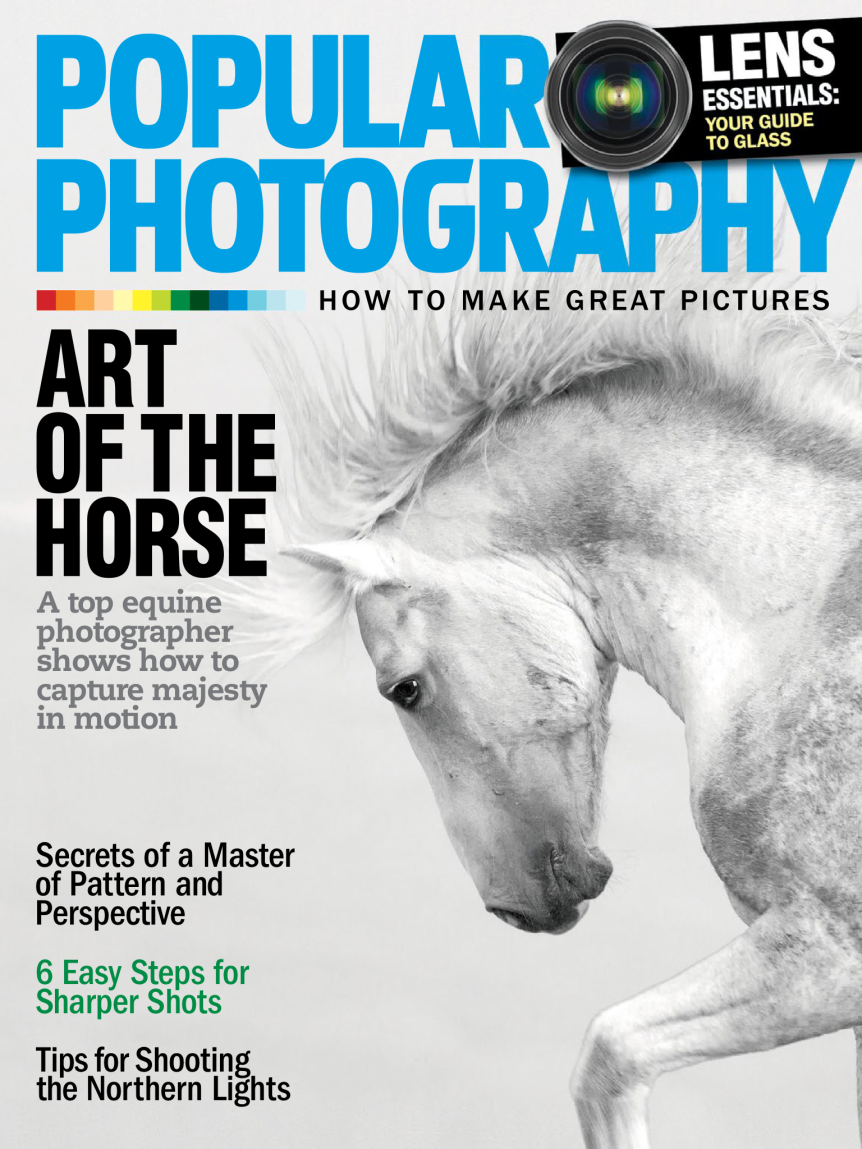
February 2016 Popular Photography Magazine
The wild stallion Cloud of the Pryor Mountains of Montana
Having photographed equine subjects professionally for more than 15 years, Carol Walker can tell at a glance whether a pictured horse is domestic or wild. “The domestics are usually very clean and shiny,” she says. “Their manes are untangled, and they’re prettier. The wild horses have a more rustic look—they’re just dirty,” she adds with a laugh. “They might have matted hair, and they look rougher. But they’re gorgeous when they’re galloping in the wild.”
Walker has an affinity for both types. “I’ve loved horses since I was a little girl, and I’ve ridden them all my life,” she says. “The more you know about your subject, the better photographs you’re going to get. With horses, I know how to predict what they’re going to do and how to work with them.”
A resident of Longmont, Colorado, Walker is a fervent advocate for the preservation of wild horses in the American West. “Right now our wild horses are getting squeezed out by very powerful interest groups such as cattle and oil and gas, so they’re disappearing,” she says. “I’ve been fighting to try to keep them wild. It’s a tough fight.”
Walker’s recent self-published book, Galloping to Freedom ($40; wildhoofbeats.com) is sponsored and partially funded by Cana Projects, a wildlife preservation foundation. “It’s about a group of horses that were rounded up in Wyoming,” Walker says of the book. “They were all separated from their families, then reunited at the Black Hills Wild Horse Sanctuary. So it’s a true story with a happy ending.”
Read the rest of the article, with photos, here:
http://www.popphoto.com/carol-walkers-tips-for-taking-majestic-horse-photographs

